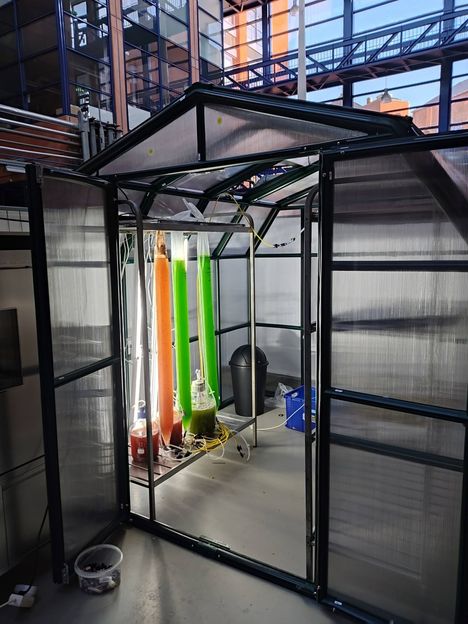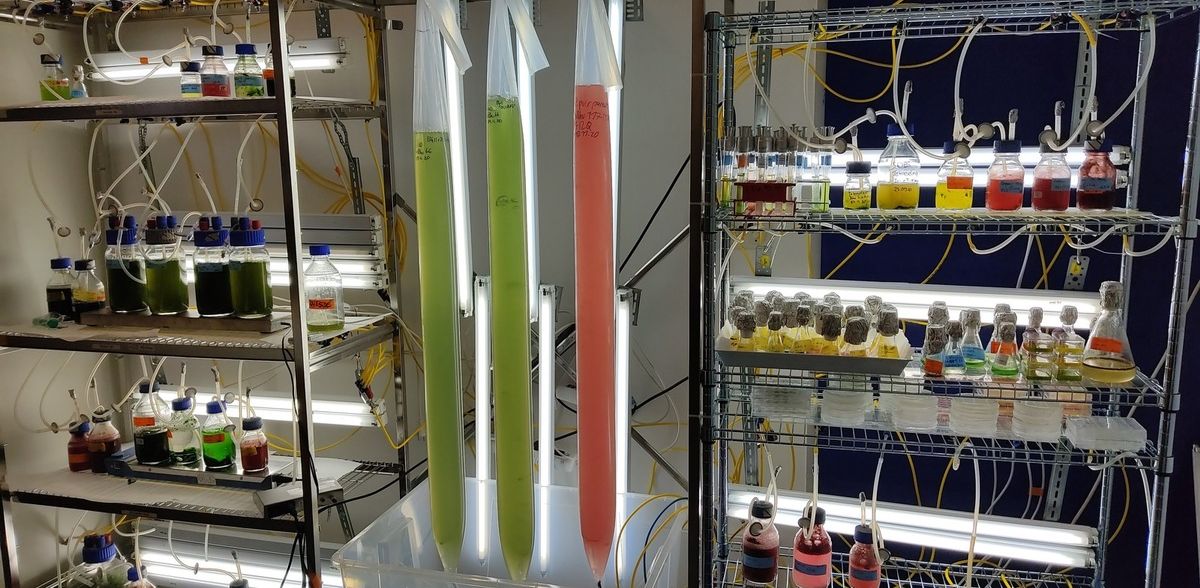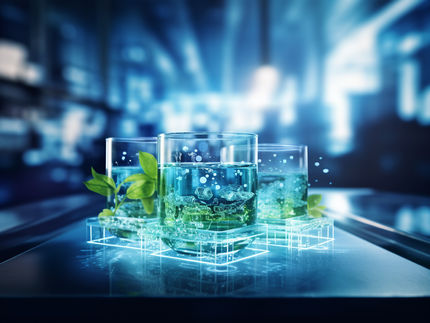University project "ALGROW" explores sustainable options for microalgae production
New technologies could reduce CO2 emissions in the industrial sector
Advertisement
They are considered a promising raw material for the food, cosmetics and pharmaceutical industries and have been used in various fields for years: microalgae. However, their production is currently quite cost-intensive in some cases. Scientists at Bremerhaven University of Applied Sciences are working on the research project "algae Growth", or "ALGROW" for short, on the question of how industrial waste gases and waste heat can be used for the cultivation of microalgae. This could not only reduce production costs, but also the greenhouse gas emissions of companies. To this end, they are cooperating with the Bremerhaven-based tile manufacturer Nordceram GmbH.

Test setup ALGROW
Antonio Gavalas Olea
More than 20 percent of greenhouse gas emissions in Germany were produced by industry in 2022. One solution could be to use the waste gases produced there for the production of algae. This is because microalgae need CO2, among other things, to grow. This can also be obtained from industrial waste gas. "Studies show that microalgae can reduce the content of toxic gases in waste gases by up to 75 percent and thus reduce the release of greenhouse gases," says project leader Prof. Dr. Imke Lang. Microalgae could thus be a way to make industry more climate-neutral. Companies that produce algae would also benefit. "The use of CO2 significantly increases cell growth and thus yield. However, the gas is a costly resource. Industrial waste gases would be a more cost-effective alternative," says Prof. Lang. The project will also investigate whether warm waste gases can also be used for algae production. If so, these could be fed directly into the reactor in which the microalgae are cultivated.
A particular economic challenge is the harvesting and drying of the microalgae. Here, operating costs are currently very high. "Drying is done by drum, spray, freeze or sun drying. The first three processes are used when high-quality products are to be obtained. However, they involve high costs, which can be as high as 20-30 percent of the total production. In the latter drying method, product quality defects due to contamination and oxidation are to be expected. Therefore, it is only used when the integrity and quality is not an issue," says Prof. Lang. The researchers want to use industrial waste heat to develop a cost-efficient drying method that is gentle on the product while ensuring high product quality.
The project will not only answer questions about sustainable and economical microalgae cultivation, but also develop a recommendation for commercial microalgae production in Bremerhaven. "There is currently no commercial microalgae production plant in Bremerhaven and Bremen, although we find food and feed producers and other companies with various valuable residual streams. The reduction of waste gas release to the atmosphere and the lower production costs of microalgae while increasing yields make algae production attractive to the region. At the same time, the food industry can use the valuable substances extracted from algae. Conceivable uses include substances used as coatings and gelling agents, pigments as dyes or antioxidants," says Prof. Lang.
The two-year "Algae Growth" project is funded by Bremerhavener Gesellschaft für Investitionsförderung und Stadtentwicklung mbH (BIS) under the PFAU funding program.
Note: This article has been translated using a computer system without human intervention. LUMITOS offers these automatic translations to present a wider range of current news. Since this article has been translated with automatic translation, it is possible that it contains errors in vocabulary, syntax or grammar. The original article in German can be found here.

























































